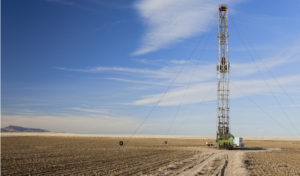With oil prices nearing $100 per barrel, many shale drillers may be rethinking their restraint. Since the COVID pandemic collapsed oil prices and demand, shale drillers have consolidated and restrained themselves from drilling too many new wells in what is a dwindling supply of the best producing areas. Now, some may be rethinking that restraint as high prices make increasing production irresistible. Derek Brower reports in the Financial Times:
Oil’s vault above $95 a barrel is tempting US shale energy executives to fire up drilling rigs in search of more crude, risking the wrath of Wall Street in the process.
A sector once known for debt-fuelled production binges that made the US the world’s biggest oil supplier has largely embraced financial discipline, with executives pledging never again to outspend cash flow and burn through capital on costly projects.
But the rebound of oil markets to the highest levels since 2014 is challenging that resolve. The response from shale companies will determine the path of US oil output that is languishing well below its pre-pandemic peak.
“In the back of everyone’s minds is, ‘When is it going to be [production] growth? . . . We have investors saying ‘My gosh, if not now, when?’” Rick Muncrief, chief executive of Devon Energy, said in an interview.
“But for every one saying that, there’s at least one other if not two others waiting to say, ‘Gotcha! We knew that discipline would be shortlived.’ We have learned our lesson,” said Muncrief, whose Oklahoma City-based company is one of the biggest producers in the US shale patch.
The big public independent companies, such as Pioneer Natural Resources, EOG Resources, Diamondback Energy and Devon — collectively accounting for about 1.4mn barrels a day of US production — have all pledged to keep a lid on capital spending.
“The capital that historically we would spend in growing the company, now we’re redeploying that in the form of share repurchases,” Travis Stice, Diamondback’s chief executive, said at an industry conference last month.
Scott Sheffield, Pioneer’s chief executive, has vowed that his company will hold production growth to 5 per cent a year — well below the breakneck pace of pre-pandemic boom years.
The commitments have pleased investors. Devon’s variable dividend and share buybacks, announced in November, helped make it the S&P 500’s best performer in 2021. The energy sector as a whole has far outperformed the stock index in the past year, albeit from a low base.
But the capital spending commitments were made in the wake of a crash in 2020, when oil prices plunged well below those needed by shale producers to turn a profit.
West Texas Intermediate crude settled at $95.46 a barrel on Monday. At that level companies could honour dividend commitments and start increasing production without damaging their balance sheets, analysts said.
Drilling has picked up, especially in the prolific Permian Basin of Texas and New Mexico, compensating for output losses elsewhere. But it has largely been led by private companies. ExxonMobil and Chevron, the two supermajors with large positions in the Permian, have also announced production increases that could total about 175,000 b/d by the end of the year.
Scott Gruber, an analyst at Citi, said he expected large listed independents could follow suit soon, with “an increasing number beginning to lean into the market”. Capital spending by this group could rise 30 per cent this year, he predicted in a recent note.
Rystad Energy, a research company, pointed to a “fundamental shift in the operational philosophy” emerging among public shale operators in response to the strong oil market.
Read more here.

